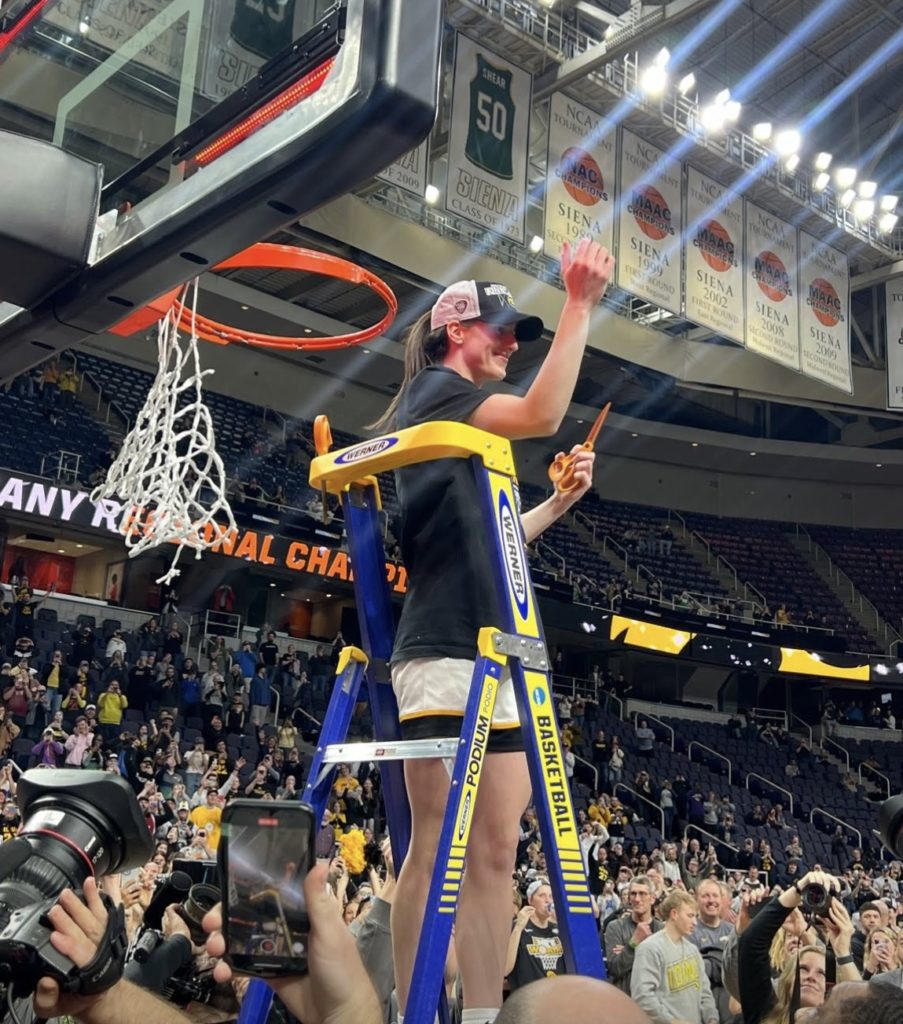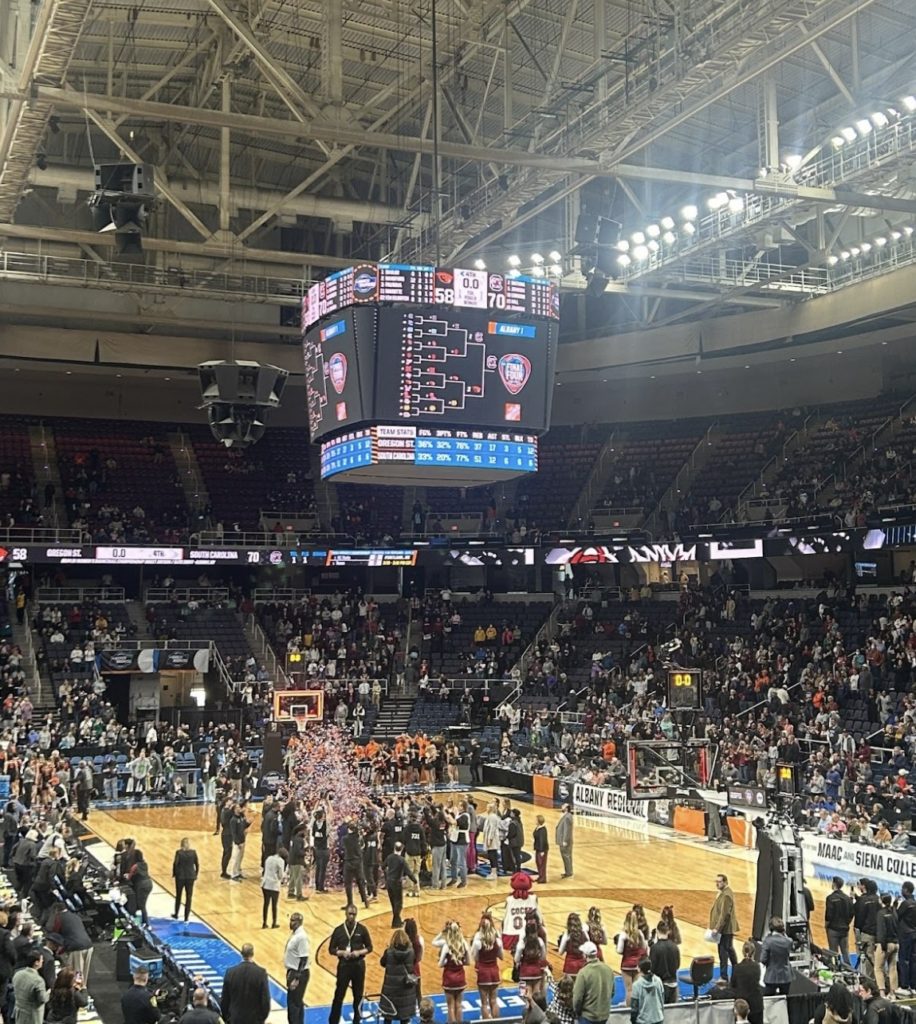Anyone who watched the NCAA Division I women’s basketball NCAA tournament games in person or at home got a taste of the excitement and buzz around March Madness, particularly the star player storylines (i.e., Caitlin Clark, JuJu Watkins, Paige Bueckers, Angel Reese, Flau’Jae Johnson, and Kamilla Cardoso) and historic matchups.
Women’s college basketball is in a new era with millions of eyes and attention upon it due to these larger-than-life players with larger-than-life talent and skills. The Elite Eight game between Iowa-LSU set a record for new viewership with 12.3 million average viewers, only to be beat by the Final Four matchup of UConn-Iowa with 14.2 million average viewers, and then again during the Iowa-South Carolina NCAA championship game with 18.7 million viewers reaching a peak of 24 million. Additionally, during the tournament, FanDuel and Bet MGM reported a new all-time record for betting on women’s sports.

Why are we suddenly seeing the uptick in women’s college basketball consumers and spectators? First, it’s important to recognize that women’s college basketball fans are not new. Division I attendance for all games has been over six million since 2000 and holding over eight million since 2008. According to Founder and CEO of GOALS Sports Caroline Fitzgerald, women’s college basketball is experiencing a tipping point: “We’ve heard it nonstop recently that women’s basketball is at a ‘tipping point’—and I couldn’t agree more. This year’s March Madness tournament has been particularly transcendent for the game. However, it certainly isn’t the first year that the women’s tournament has been ‘exciting.’ It’s always been exciting—this is just the most it’s been broadcast or marketed so the reach of the overall excitement is up.”
In this social media and name, image, and likeness (NIL) era, where fans have more access and content of players than ever before, we are seeing a huge interest and investment in women’s college basketball. For example, ESPN’s exclusive rights to the NCAA women’s basketball championship and all 67 games for the 2024 March Madness bracket. Additionally, women’s college basketball is easier to consume than ever before on a multitude of platforms (i.e., ESPN networks, ABC, Peacock), with more writers, contributors, and anchors focusing on the growth of the game. Recently, ESPN had an all-Black women studio featuring Elle Duncan, Andraya Carter and Chiney Ogwumike providing pre, post and halftime reporting and analysis during the Sweet 16, Elite Eight, Final Four and championship games.
Perhaps one factor that has gone under the radar amid the multitude of storylines surrounding this explosion of attention and viewership of women’s college basketball is the women’s college basketball community itself. This community is committed to showing up to support their teams, but also women’s college basketball collectively. For the third consecutive year the first two rounds of the women’s March Madness tournament have set a new attendance record from 216,890 in 2022, to 231,677 in 2023, and 292,456 in 2024. Tickets to the first and second round games of March Madness played at Iowa’s Carver Hawkeye arena sold out in less than an hour and the University of South Carolina led the 2024 NCAA average attendance with 16,067 fans per game. Additionally, not only did the Final Four games in Cleveland, Ohio sell out, but 19,000 fans showed up to watch Iowa and South Carolina’s pre championship game practices.
As a basketball fan who sat in TD Garden in Boston for the men’s March Madness Sweet 16 games and MVP Arena in Albany for the women’s games, I observed an atmosphere in MVP Arena which was drastically different. The environment for the games at TD Garden were what are expected of March Madness– loud, packed, and a surging energy, but overshadowed by excessive drinking, fighting amongst fans, and inconsiderate behavior. At MVP Arena that same surging, loud, exciting energy was felt through every section into the rafters. Associate Professor of Management and Sport Management Coordinator at Siena University Adam Pfleegor stated, “As hosts we couldn’t have asked for a better week. Over 53,000 fans witnessed the action, and it was the loudest I’ve ever heard MVP Arena for any event. It truly felt like a turning point in the history of women’s sports. Having Angel Reese and LSU battle Caitlin Clark and Iowa in our final game was something special.”

Beyond a loud arena and exciting games, the overarching theme over the week in Albany was a focus on the collective uplift of women’s college basketball. Fans discussed the storylines, star players, but also overwhelmingly kept commenting on how “cool” and “amazing” it was to see this growth, interest, and attendance at MVP Arena for these matchups. Fans were simply there to see “women win.” Assistant Professor of Sport Management at Vermont State University at Castleton Dr. Jessica Hammond-Graf explains this sense of community is what makes women’s sports unique stating, “I think going to women’s games the fans are free to be themselves. When you go to women’s games it is more supportive and there is a sense of community. By being there you are advocates for the women’s game, participating in activism, activism in that this attendance is going against the grain, the norm. Every time people show up to a women’s sporting event you are being an activist for women’s sports.”
Women’s college basketball and this community’s growth provide further evidence for successfully capturing the “attention economy” (e.g., fans focus on other content and experiences instead of traditional linear sport media), labeled by the Sport Innovation Lab’s Fluid Fan Report (2020). The Sport Innovation Lab found that the highest percentage of fluid fans are in the women’s sports market. Fluid fans are marked by attitudes that are “open to change, empowered to choose, and continuously evolving—moving from one form of entertainment to another” (Fluid Fan, 2020, p. 3). Particularly, women’s sports fans have engaged on digital and social platforms as historically they have had less options to watch women’s sports in traditional linear models and on widely available platforms (i.e., ABC, CBS, ESPN). Until 2022, women’s sports only made up 4% of sport media coverage but saw a jump to 15% in 2023, with a prediction of 20% of sport media coverage by 2025. Further research by the Sport Innovation Lab found that members of the women’s sports community are retained at a higher rate than general sports fans and they also reward brands that invest in women’s sports with their purchasing patterns.
Research collectives and sport management researchers continue to point to the value of investing in women’s sports and their collective community growth as sound business practices with high return on investment (ROI). There is an active community striving and itching to engage with women’s sports content, especially in women’s college basketball. It would behoove the NCAA, member institutions, and media conglomerates to continue to identify fan behaviors that create opportunities to develop new revenue streams through highlighting women’s college basketball’s unique storytelling and fans continued desire to attend high-caliber games.

